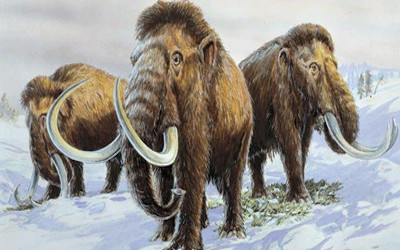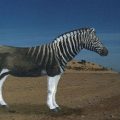PTE考生目前最大的问题之一就是练习题缺乏。除了有限的基本官方书(PLUS,Testbuilder, OG)之外就没有题了。很多英语基础不是很扎实的同学很难找到练习材料。悉尼文波雅思PTE培训学校专门为澳洲,尤其是悉尼、墨尔本的PTE考生准备了适合PTE听力阅读练习的科学60秒。各位PTE同学可以练习PTE听力中的summarise spoken text和PTE口语中的retell lecture,练习记笔记技巧和复述。
听力内容:
60秒科学节目(SSS)是科学美国人网站的一套广播栏目,英文名称:Scientific American – 60 Second Science,节目内容以科学报道为主,节目仅一分钟的时间,主要对当今的科学技术新发展作以简明、通俗的介绍,对于科学的发展如何影响人们的生活环境、健康状况及科学技术,提供了大量简明易懂的阐释。
This is Scientific American — 60-Second Science. I’m Christopher Intagliata.
In their heyday, woolly mammoths blanketed the Siberian steppe, Alaska and large parts of North America. But by 10,000 years ago, warming climates had turned many of the grasslands they grazed into forest. And humans, well they weren’t so friendly either—one mammoth provides quite a feast. So the mammoths largely disappeared.
Except there’s this one holdout population. On an island in the Arctic Ocean,
called Wrangel Island.
Where the last mammoths hid out…for more than 6,000 years.
“So the pyramids have been built, they’ve started to grow tea in China,
and civilization had formed, and here are these mammoths no one knew was there,
for the longest period of time.”
Rebekah Rogers, an evolutionary geneticist at the University of North Carolina.
“And then people finally found this island around 3,700 years ago,
around the time they went extinct.”
Rogers and her colleague Montgomery Slatkin analyzed the genome from
the tooth of one of those island mammoths, which lived 4,300 years ago.
They compared it to the genome of a mainland mammoth, from much farther back, 45,000 years. And they found that harmful mutations had polluted the island mammoth’s genome in that time interval.
Mutations that led to the loss of smell receptors, and urine proteins—compounds
they probably needed for social signaling and mate choice.
The animals also developed this satiny coat, that shines in the light.
A trait that’s actually popular for pet breeders today, for rabbits and guinea pigs.
And the reason for all these mutations? Rogers says there just weren’t enough
individuals on the island—1,000 at the most, 300 at their lowest—to allow natural selection to run its course. So it wasn’t survival of the fittest. It was survival of…whoever randomly survived. Which meant they accumulated a lot of mutations. None of which made them drop dead—but they weren’t all that fit, either. The study is in the journal PLoS Genetics.
Rogers says a similar process could happen for rare animals on Earth today,
like cheetahs, pandas, gorillas.
“If you have a very small population for a very long time you can get this accumulation of bad mutations in their genomes. And so we’d expect to see
the same effect for them. It does take a long time period to get a signal as big as
what we saw in the mammoths, so the earlier we can intervene for those species,
the better off they’ll be.”
As for those humans who, long ago, found this last holdout of mammoths
on Wrangel Island? “We don’t have direct evidence they hunted them, but you kind of wish
that they had taken them back and domesticated them.” There’s already one interested buyer.
“Oh yes, if you can find one I would like to have one as a pet. Preferably a little smaller so it fits
in my house.”
Thanks for listening for Scientific American — 60-Second Science Science. I’m Christopher Intagliata.
墨尔本悉尼文波PTE原创首发
更多精彩请持续关注微信wenbo_tv3。





